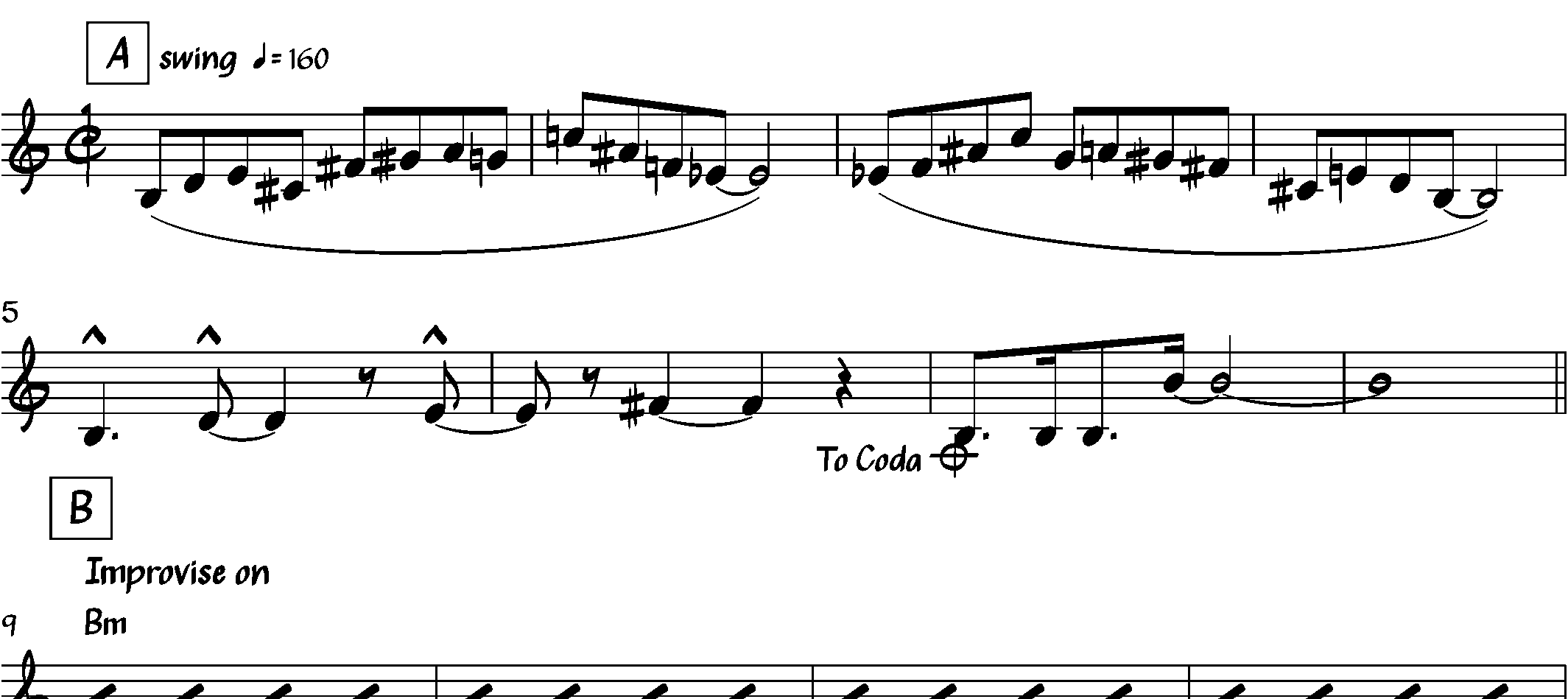What I am discovering about Miles Mode
Firstly, Miles Mode has a very arresting 8 bar motif. That’s what I’m focusing on here; not only does it sound great, it has two very satisfying mathematical properties.
. Its palendromic symmetry
. Its use of each of the twelve notes
What is Miles Mode?
It is a simple short tune written by John Coltrane and performed by him and the great quartet of 1962 consisting of
-
John Coltrane – tenor saxophone
-
Jimmy Garrison – double bass
-
Elvin Jones – drums
-
McCoy Tyner – piano
What’s the structure?
The 32 bar head is:
. 8 bar motif (Rehearsal Mark “A” see below)
. 16 bars improvised on B minor (“B”)
. repeat “A”
What’s the mathematical pattern?
-
The row of notes comprising the first 4 bars of the motif use all twelve note names once each.
-
The motif is palendromic. The motif comprises an 2 bar inital “cell” followed by that cell reversed i.e. a retrograde transformation of it.
Anyway, most importantly, its sounds great, and the pattern of the note structure just caught my eye.
From what I gather, it is not a “twelve tone row” as prescribed by the most restrictive interpretations of Arnold Schoenberg’s twelve tone concept in which a sequence of notes isn’t supposed to describe conventional “tonal” structure. Whereas in the case of Miles Mode we have, consonant arpeggios in bars 1 and 2: Bmi F#mi Cmi7 … in short, whatever they are, they form a more consonant melodic line than a twelve tone row usually is to my ears.
I’m not sure that the mathematical appreciation makes any difference to the way it is played. But I am sure that the ear of the listener picks up these “mathematical” patterns of symmetry and reversal most likely subconsciously, so playing them accurately is important.
How it looks
